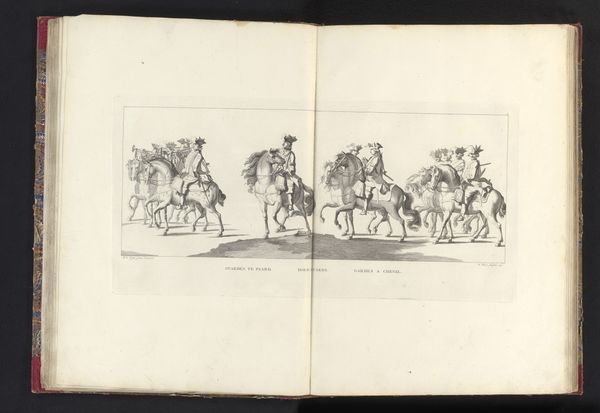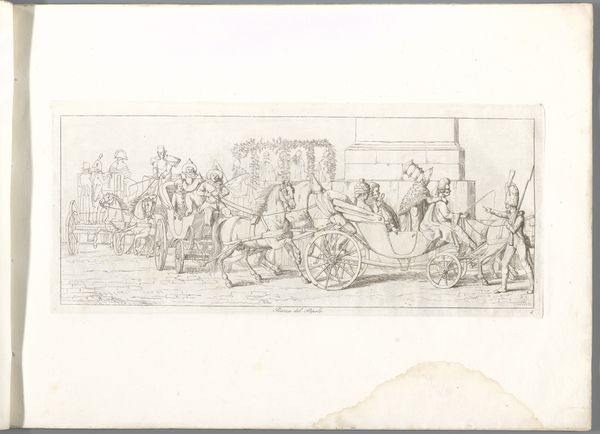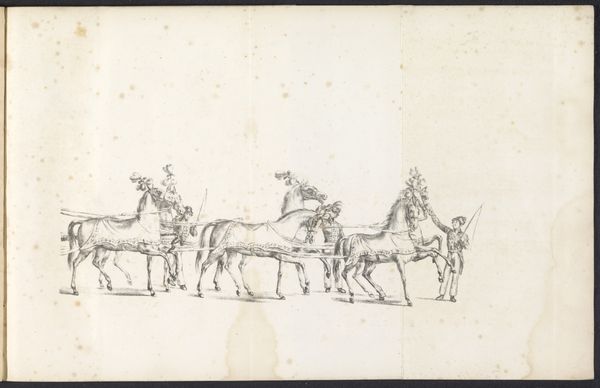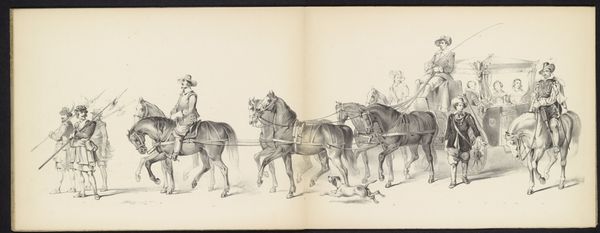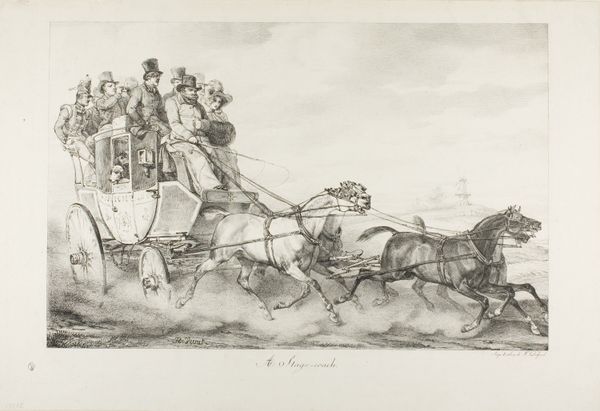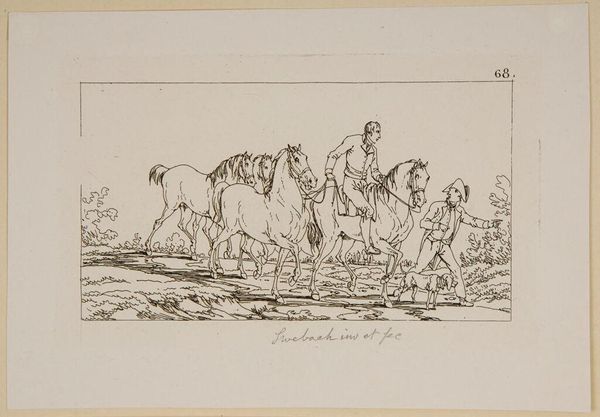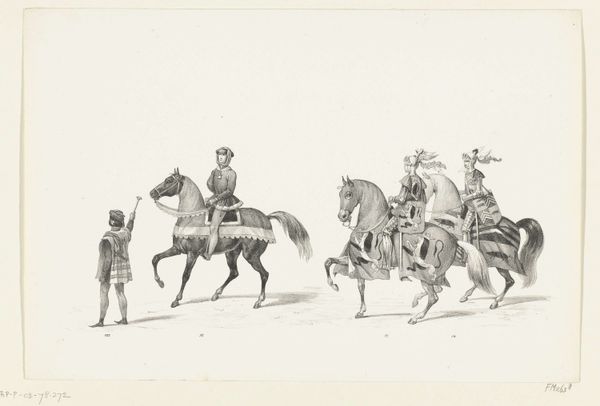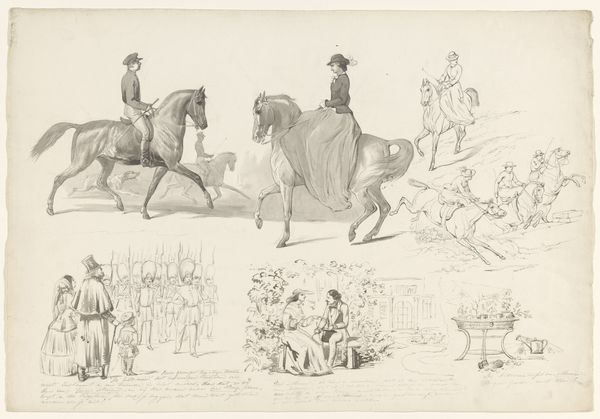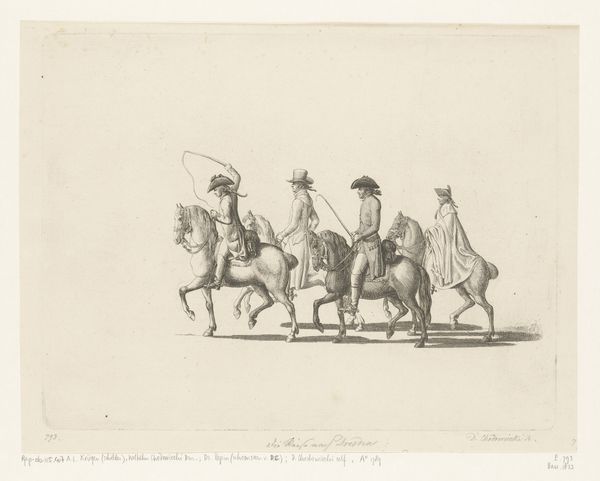
drawing, ink, pen
#
portrait
#
drawing
#
light pencil work
#
baroque
#
pen drawing
#
pen sketch
#
sketch book
#
landscape
#
figuration
#
personal sketchbook
#
ink
#
ink drawing experimentation
#
pen-ink sketch
#
pen work
#
sketchbook drawing
#
pen
#
history-painting
#
sketchbook art
Dimensions: height 270 mm, width 560 mm
Copyright: Rijks Museum: Open Domain
Editor: This is "Lijkstatie van Willem IV, 1752, plaat 3", a pen and ink drawing by Jan Punt, made sometime between 1752 and 1755. It depicts a procession of riders on horseback. There’s almost a repetitive, ceremonial feel to it. What can you tell me about its significance? Curator: This image provides us with a fascinating insight into the public spectacle surrounding the death of Prince Willem IV. What stands out to me is the representation of power. This isn’t just a depiction of mourning; it's a carefully constructed image meant to project authority and continuity. Editor: Continuity how so? Curator: Well, think about it. Willem IV's reign was relatively short, but his death was a crucial moment for solidifying the hereditary Stadtholderate for the House of Orange. The elaborate funeral procession, captured here in meticulous detail by Punt, served to visually assert their right to rule and influence public opinion. How does that relate to today's leaders and art produced about them? Editor: That makes sense. It was a form of political theater then, almost like orchestrated PR. So, the image isn’t simply documentation but actively shaping perceptions. Curator: Precisely. The choice to depict this event through meticulously detailed drawings, accessible through prints, democratized its message, further cementing the Orange narrative across Dutch society. Think of it as an early form of propaganda using accessible imagery. It invites contemplation on the intersection of art, politics, and public memory, don't you think? Editor: Absolutely. I hadn't considered how the very act of distributing this image through prints helped disseminate a specific message about the ruling family. I’m going to think about that whenever I see similar images! Curator: Indeed, the study of art, history, and political motives provides essential information about leadership and influence.
Comments
No comments
Be the first to comment and join the conversation on the ultimate creative platform.
